In this episode of the eLife podcast we hear about Parkinson's Disease, depression, chickenpox, bats, beetles and how small prey can escape larger predators.
In this episode
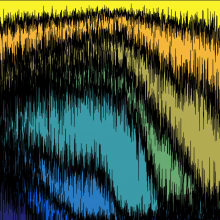
00:35 - Model behaviour
Model behaviour
with Benson Ogunjimi, University of Antwerp
Ninety per cent of the people reading this will have succumbed at some point to 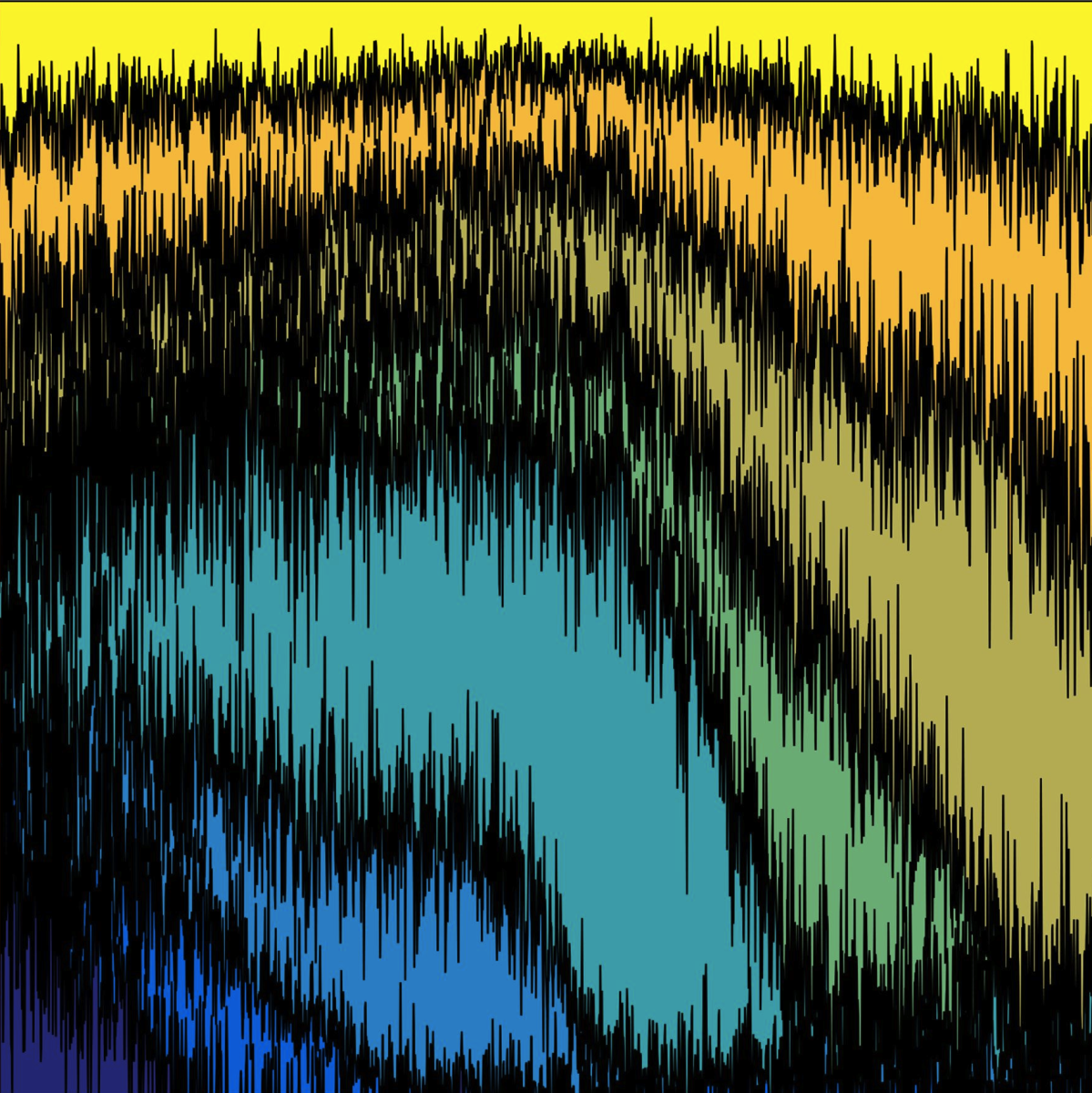 chickenpox, which is caused by the varicella zoster virus, a member of the herpesvirus family. After the initial itchy rash clears, the virus lays low in the nervous system and periodically reactivates to produce painful infectious skin lesions called shingles. A live attenuated vaccine has been produced to prevent infection, but some countries are wary of using it. But should they be? Benson Ogunjimi has modelled the repercussions of widescale vaccination, as he explained to Chris Smith...
chickenpox, which is caused by the varicella zoster virus, a member of the herpesvirus family. After the initial itchy rash clears, the virus lays low in the nervous system and periodically reactivates to produce painful infectious skin lesions called shingles. A live attenuated vaccine has been produced to prevent infection, but some countries are wary of using it. But should they be? Benson Ogunjimi has modelled the repercussions of widescale vaccination, as he explained to Chris Smith...
Benson - Chicken pox which causes an itching rash. Most children have a benign course of the disease. Some children actually develop serious complications leading to a very high burden of disease and even mortality in some situations so a vaccine has been developed. However, some theories have suggested that vaccinating children against chicken pox, the elderly might have an increased risk of shingles, also called herpes zoster. That might of course, increase the burden of disease in that age population.
Chris - What's the rationale behind that then? Why should there be a spike in shingles cases in elderly people if you vaccinate younger people?
Benson - It's an interesting question because actually, the virus which causes chicken pox is the same virus which causes shingles. After individuals have encountered chicken pox, the virus stays in the body and can wait until at a later age when it re-awakens, reactivates, and causes shingles. The theory was that through re-exposure to a patient with chicken pox, an adult might receive a boosting of immunity, a boosting of protection against the virus which could reduce the risk of reactivating the virus. Thus, meaning that through re-exposure to chicken pox, adults might have a lower risk in developing shingles. So, if we reduce the circulation of chicken pox, thus, reducing the risk of having a contact with the person with chicken pox, we actually also reduce the probability that we reduce the risk on shingles.
Chris - In other words, although you still carry the agent because it seems to perhaps stimulate your own immune system less well with passing time, you do nonetheless need that exposure to circulating chicken pox in the population to keep your immunity up to speed. Otherwise, you do risk getting a breakthrough of the virus that's already in your body.
Benson - Yeah, that's true. Of course, up until now, chicken pox was widely circulating in the population. So, we've never actually met a situation in which there was no circulation of chicken pox. But indeed, there's a theory that through the frequent re-exposure to chicken pox, that individuals can get a boosting of their immunity, a natural protection against shingles every 5 to 10 years when they encountered their own child or they encounter their grandchildren, or they encounter a niece or a nephew in a party. So, all those encounters with children are protective against the development of shingles.
Chris - Now, what have you done here to ask the question, whether or not vaccinating people universally will carry a higher risk of reactivation of the virus in the current population when they get old then? How have you approached this?
Benson - We started from an individual perspective. We used a computer simulation in which we create a simulated population of Belgian individuals. We assumed that after they contracted chicken pox that their immunity was boosted against chicken pox and that the immunity went with time, but could of course increase when they had a re-encounter with the patient with chicken pox. Then we assumed a certain time point, the immune level would be so low that individuals would develop shingles. So, we tried to simulate that kind of behaviour in Belgium, in the population, and we actually used the predicted shingles incidence to compare with the actual measured shingles incidence in Belgium so that we could see whether our model was appropriate or not, and what the parameters were in the model.
Chris - And what happens?
Benson - So, the outcome for those who were not vaccinated was the probability for them for developing shingles was higher in about 40, 50 years after introduction of universal widespread vaccination against chicken pox. So, we saw that the shingles incidence had a peak that was 1.75 times higher than the value before the introduction of the chicken pox vaccination programme.
Chris - So in other words, while it's okay for the people who get vaccinated because they're protected from having acute chicken pox and they won't get shingle subsequently, those individuals that are already infected with the wild type circulating chicken pox, they could be paying a price of twice the incidence at the moment in 30 years' time of shingles in order to protect the young of today.
Benson - That's completely correct. So indeed, there's a trade-off between protecting the children or protecting the adults. But of course, with the new vaccine on the market which shows to be very successful with about 100 per cent efficacy against shingles might be also something in the future to consider combining a vaccination schedule against chicken pox as well as a vaccination schedule against shingles with the very successful shingles vaccine.
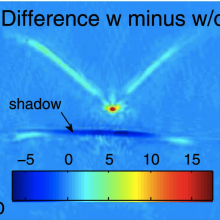
06:16 - Sounds good
Sounds good
with Elizabeth Clare, Queen Mary University London
Bats find their way around and also track down prey by emitting high frequency  sound waves. When these hit a surface, the echo pattern returned to the bat can be used to build up a sonic image of the surroundings. Now, thanks to some clever engineering by Marc Holderied and his colleague Elizabeth Clare, we have a much clearer idea of how these animals use this information to hunt, and she spoke to Chris Smith about their discoveries...
sound waves. When these hit a surface, the echo pattern returned to the bat can be used to build up a sonic image of the surroundings. Now, thanks to some clever engineering by Marc Holderied and his colleague Elizabeth Clare, we have a much clearer idea of how these animals use this information to hunt, and she spoke to Chris Smith about their discoveries...
Chris - So, how did you approach this then? What did you actually do to try and work out what the bats were doing because they obviously are quite good at doing this, otherwise they would all starve to death.
Elizabeth - Yes. Well, it's a very specialised group of bats that does this. What we did was, we took some moths that were dead and we put them on surfaces. So, some bark, some rock, some leaves, and some slate that's really, really smooth. We actually built almost an artificial bat that has a microphone and a emitter that puts out echolocation. We had that little machine scan the leaf or the bark or the stone with the moth on it. And then we recorded the echoes that came back to see what it was that they would actually see. And then using some new technology, we can turn that into a visual image. So, we actually get a picture of what the bat sees acoustically.
Chris - And what does the bat see on those different surfaces?
Elizabeth - Well, that was what was interesting. On some surfaces, it's really obvious there's something there. If you have something like slate or a leaf that's really, really smooth then you get basically a long, thin, smooth sound back that's the surface and suddenly, you get disruption which is where the prey is. If they look at something like bark which is really, really rough then there's a lot of disruptions all along and they might not notice that there's anything there because disruption is what the surface looks like - all these different holes, and channels, and valleys, and ridges. And so, what we found was that some surfaces are really, really hard to find to prey on and some surfaces are really easy - the smooth ones that are like mirrors make it very easy to find the prey item. And the second thing we found though is that the prey itself may be hard to see because it's unpredictable. It could be any size, it could be any shape, it might have its wings up, or its wings down. But what they probably are noticing is that when they scan that surface, you get smooth background, background, background, and then disruption, and then background, background, background. So, what they might actually be looking at is the missing background. If they see a disruption then they pay attention because there's something there disrupting the surface.
Chris - Does the observation of what the bats really do tally with what your model, your fake bat says they must be doing?
Elizabeth - In a way yes, so the bats that are really good at this, they hunt in patches of leaves and they'll go out every night to the same leaves and scan them around and around, and around. They have a little patch that they defend. And so, they should be really, really used to what it looks like to be in their patch. They know what the leaves look like. They have a search image for their patch. So, if something disrupts it, they're going to notice and it's a lot more effective than if they were just randomly hunting in the forest. And so, these bats probably have a very, very good sense of what their environment should look like and they're looking for disturbances in there. The second thing about them is that they hunt off leaves not rough surfaces. So, they're using the surfaces that we know should give them the strongest signals.
Chris - So, why haven't things that do have rough surfaces that would give this sort of acoustic masking, this camouflaging effect, why aren't they absolutely riddled with insects that have evolved to "know" that if they lived there, bats won't get them?
Elizabeth - Well, that's a big unknown whether the insects have any idea that there's a surface that gives them more protection than others. This is one of the new things we found that this is the potential for camouflage on rough surfaces.
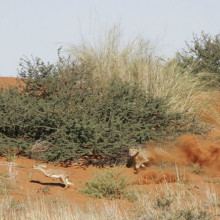
10:44 - Catch me if you can
Catch me if you can
with Rory Wilson, University of Swansea
Now from predators that fly to animals that run after their dinner; a striking feature of this interaction is that the pursued animals often put in frequent turns as they flee, apparently to wrong-foot the predator. But why does this work? Rory Wilson studies how animals move at the University of Swansea...
Rory - Well, some of us have spent a lot of time looking at cheetahs in particular. But actually, it's extremely difficult to get proper information on turns and speeds and so on, by just filming them. So, we were attaching technology to the cheetahs in collars around their necks. And so, when they chase the prey, we could find out things like how rapidly they turn and how many turns they make during chase and so on, and so forth. And then when we recovered the collars, we could take the information off and push it through our computers.
Chris - And what does this show? What do they do?
Rory - Cheetahs will take very small prey and they'll take very large prey. A cheetah itself might weigh 30 or 40 kilograms so as much as a big dog and they'll take prey as small as hares or as big as ostriches sometimes. One of the things that came out was that their hunting performance and the way they hunted depended on the prey they were trying to catch. In essence, the bigger the prey, the less the cheetah had to turn to catch them. So the small prey were jinking this way and that and the bigger prey were just simply trying to run with only a few big turns then.
Chris - Why does turning work as a strategy for a small prey item? Why does that help them to get away?
Rory - If you look at any animal and that includes big humans or you look at big animals like rhinoceroses and you ask them to run, they do run and then they turn as fast as they can, the bigger they are, the wider the turn they will put. A rhinoceros charging along will take a long time whereas something like a rabbit can turn very rapidly. There are power reasons for that and what that essentially means is if you're a rabbit and you're being chased a cheetah, and the cheetah is nearing, getting closer and closer to you, the thing you need to do is turn because you can actually outturn a cheetah.
Chris - When the rabbit turns, the cheetah takes proportionally longer and so therefore, the rabbit gains or puts more distance between the two of them. I presume that the longer the pursuit goes on, the greater the likelihood therefore that the cheetah is going to be tired out before it's actually caught up with the rabbit.
Rory - That's exactly what happens. In other words, you have the first part of a chase where the cheetah runs towards the rabbit or it runs towards the antelope and it gets closer and closer because the cheetah is faster. And then there comes a point where unless that animal then turns, it will get caught by the cheetah and so it tries to do the sharpest turn it can and if it turns at dead right, it will turn really rapidly and the cheetah will overshoot it and then have to come around in a screeching-hard, very power intensive turn. If the rabbit however turns too early then the cheetah says "Aha! It's turned ahead of me and can cut the corner that the rabbit has put in." So, the timing of the turn is really, really critical.
Chris - You've done this on cheetahs. Is this generalisable? If I take a bigger or a smaller animal than a cheetah, would I see the same "law" applying?
Rory - Absolutely and in fact, the physics of it tells us that simply, the bigger animals have less power to turn - relatively less power to turn, so they have these big turning circles. And that means the relative sizes of the predators and the prey are really important. If the predator is bigger than the prey, if you're the prey, the best way to get away is to run like crazy and then just as the predator is close enough, you turn as fast as you can. If you're bigger than the predator then really, there's very little chance that you can get away by turning. You just got to run as fast as you can away, and hope that your size and your power will enable you mitigate some of the problems of the predator.
Chris - What about on the battlefield? If we take the same sorts of things, there are issues with for instance, a missile pursuing an aeroplane or a person pursuing another person. Does the same rule apply, do you think?
Rory - Absolutely. The same rule applies. In some senses, you can see it in rugby. If someone kicks the ball up to the one end of the field and then rushes up, the fallback catches it. And then the big question is, how fast should the person rushing up to the fallback rush up, because the fallback, being stationary, can turn rather more quickly. You have to remember that your ability to turn depends on your speed and your mass. So, the lower your speed, the quicker you can turn. But the bigger your mass, the slower you can turn. So, the fall back catching the ball and being stationary, being charged up by our forward from the other side. If that forward doesn't slow down, it's quite easy for the fallback to sidestep and then run up the field.
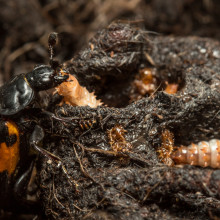
15:37 - Good and bad parents
Good and bad parents
with Rebecca Kilner, Cambridge University
One way to inherit traits from your parents is via genes. But there are other ways, as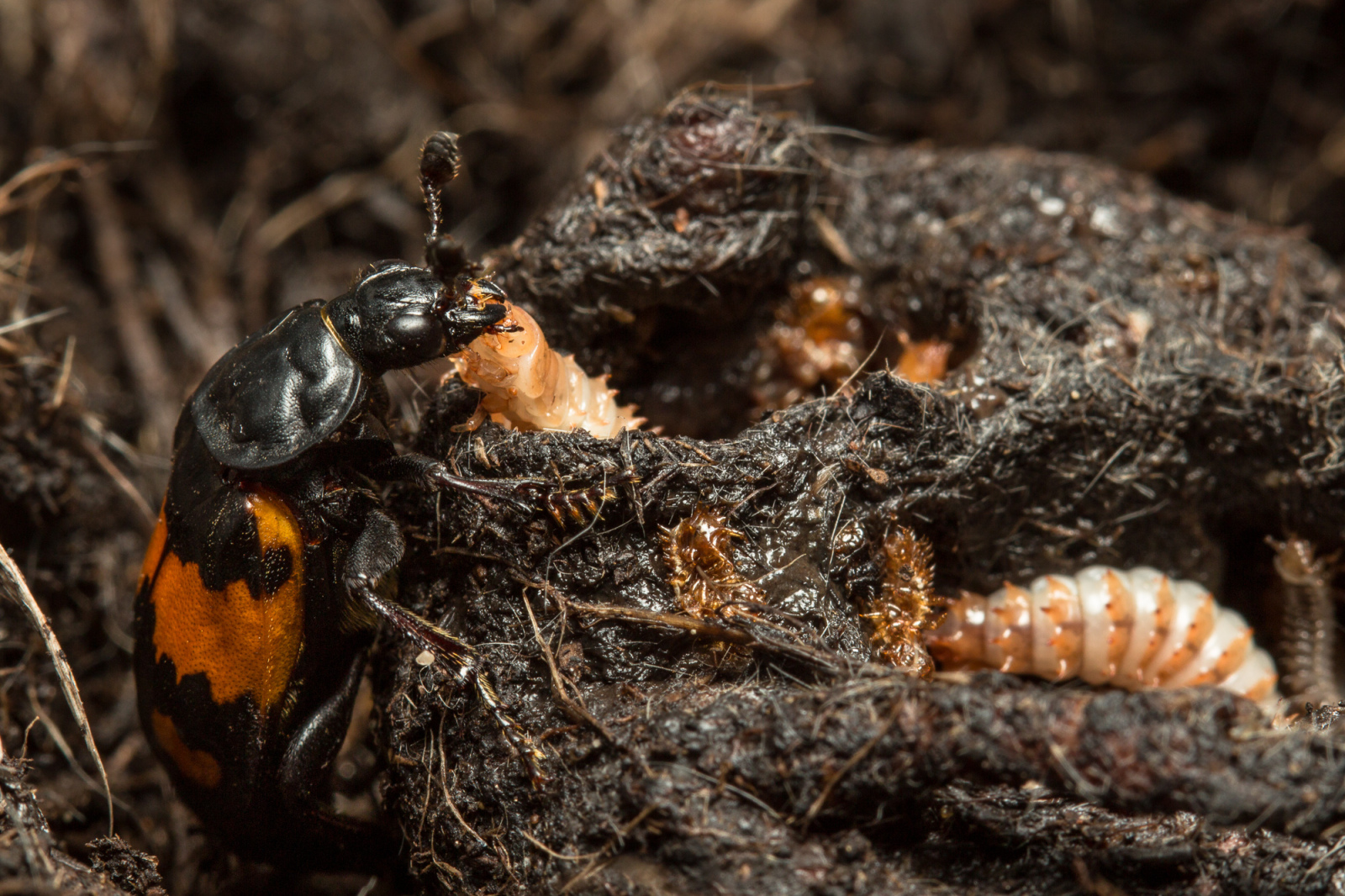 Rosalind Davies heard from Cambridge University's Rebecca Kilner...
Rosalind Davies heard from Cambridge University's Rebecca Kilner...
Rebecca - Our study focuses on an unusual insect called the burying beetle. The reason it's unusual is because the parents provide care for their young. The reason it's called the burying beetle is because the parents use the body of a small vertebrate like a mammal or a bird as a resource to breed upon. So, they locate the dead body, they strip it of fur or feathers and then they bury it in the soil. The larvae are raised upon the dead body which becomes an edible nest for the offspring. And the larvae can feel themselves on the flesh, but the parents also feed them. And so, they're unusual in providing care for their offspring in this way.
Rosalind - What's your latest paper all about?
Rebecca - We engineered two different sorts of burying beetle parents. So we created good parents and we created bad parents. We did that simply changing the kind of care that those individuals received when they themselves were larvae. So, in our experiment, larvae that received good levels of care then grew up and became good parents themselves, and had offspring that themselves were good parents whereas larvae that were manipulated to have poor levels of care then grew up to become relatively poor parents. And they had offspring that became poor parents as well.
Rosalind - How did you measure whether a beetle was a good parent or a bad parent?
Rebecca - There are actually two ways in which we carefully quantified the quality of the parent. We measured the fitness benefits that individuals gained by providing care and we did that by counting the number of larvae they produced, weighing how heavy they were and then we also measured the fitness costs that they suffered by providing care and we did that by measuring the lifespan of an individual after it provided care. So, good quality parents produce lots of healthy fat larvae and lived for a long time after caring for them whereas a bad quality parent produce very few scrawny larvae and then died quite quickly afterwards.
Rosalind - You also had pairings of one good parent and one bad parent. What did you see from these studies?
Rebecca - When we brought individuals from each of the two lines - so the bad parent line and the good parent line. We brought them back together so the pair together had to raise larvae. What we found here was that it was the good parent that suffered. If it was paired with a low quality parent as a partner, it had a shorter lifespan after raising young than if it was paired with a good quality parent. The mouse that becomes the edible nest for the larvae is also used as a food resource during reproduction by the adults. So, the adults have to balance how much they take from the carcass themselves because they are literally taking food from the mouths of their offspring. What we've shown in previous work is that parents can recoup their costs of looking after offspring by feeding on the carcass themselves. But if they don't feed so extensively on the carcass themselves and they don't recoup these costs of reproduction and that shows itself as a shorter lifespan. So perhaps what happened in this experiment was a good parent worked very hard to look after the offspring and harder than it might have done otherwise. It chose not to feed on the carcass itself to recoup the cost of reproduction and instead allowed its offspring to feed on the carcass and in this way, ended up sacrificing itself essentially for the good of its young.
Rosalind - The results that you've got from your study, were they what you were expecting to find?
Rebecca - I think we probably thought that by changing the environment during development, we would find some kind of knock on effect later in adult life. But I suppose the fine detail of the study and in particular, the way it persisted from generation to generation, they were more of a surprise and much more interesting.
Rosalind - All these experiments you've done here in your lab, do you think that the same things happen to these beetles in the wild?
Rebecca - That's a fantastic question and the short answer is we just don't know and I wish we did know.
Rosalind - So ideally, you'd have a sort of beetle style Big Brother in which you could investigate these beetles in the wild.
Rebecca - That would be amazing. If we could mark individual beetles somehow and then track their movements in nature and see what they got up to as we can do with wild bird populations for example, if we could do the same with the insect population, that would be just incredible, but we're some way off being able to do that yet.
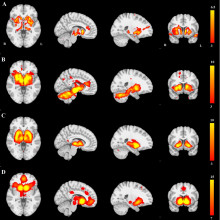
20:14 - A close look at Parkinson's
A close look at Parkinson's
with Alain Dagher, McGill University
Parkinson's Disease occurs when a protein called alpha synuclein accumulates inside 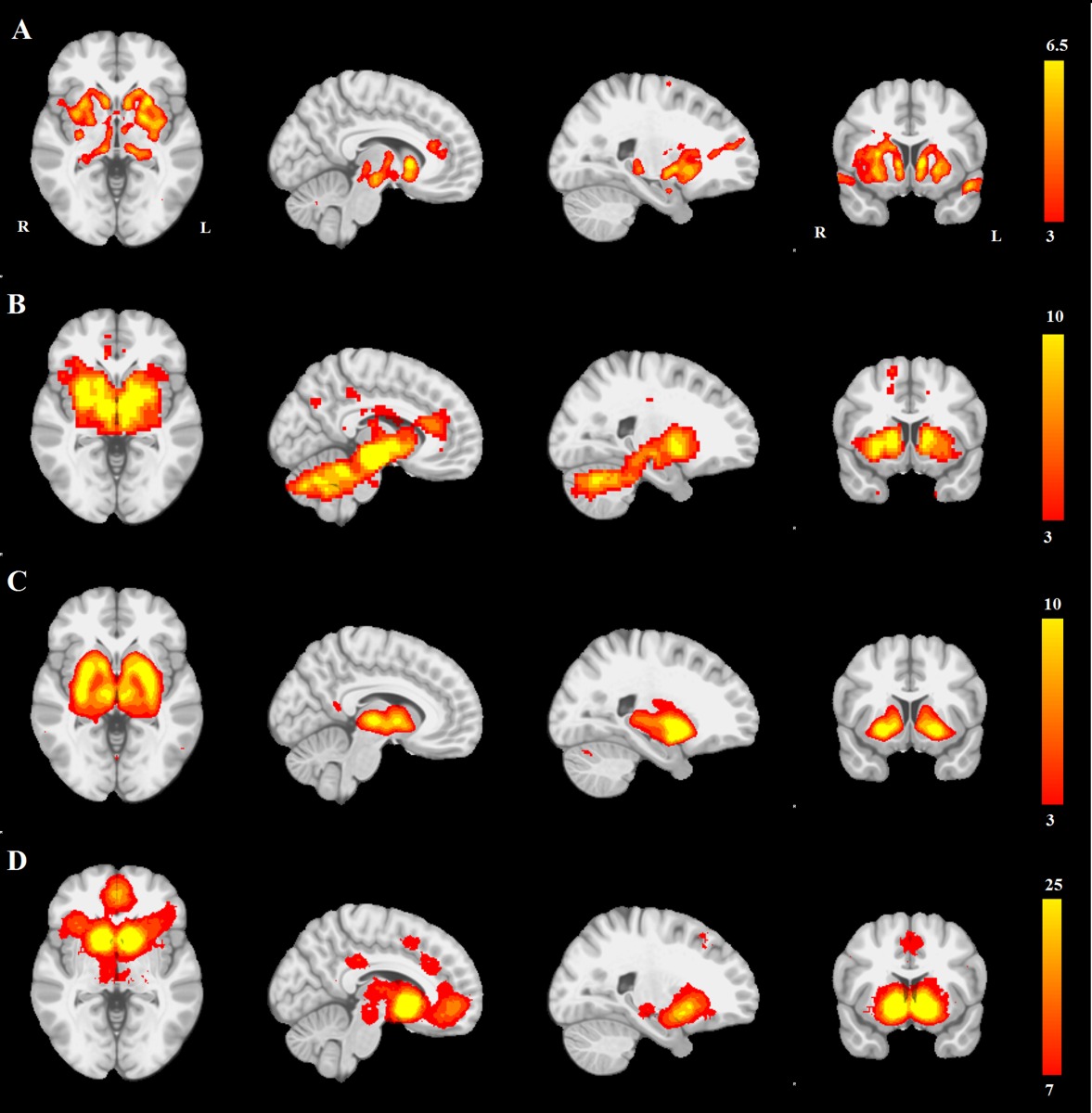 certain subsets of nerve cells, causing them to die. The protein might also spread along nerve connections from an affected area to other brain regions, although this has been difficult to test without access to very large numbers of patient samples. Now McGill University researcher Alain Dagher has analysed hundreds of brain scans from Parkinson's and healthy patients to spot some key differences that single out the condition, as well as provide evidence that the disease does spread around the brain, and he spoke to Chris Smith about his findings...
certain subsets of nerve cells, causing them to die. The protein might also spread along nerve connections from an affected area to other brain regions, although this has been difficult to test without access to very large numbers of patient samples. Now McGill University researcher Alain Dagher has analysed hundreds of brain scans from Parkinson's and healthy patients to spot some key differences that single out the condition, as well as provide evidence that the disease does spread around the brain, and he spoke to Chris Smith about his findings...
Alain - Previous studies all suffered from small numbers of patients and so, they did not have the power to detect abnormalities. So the first thing we did was map the distribution of the changes in Parkinson's disease compared to healthy controls. Up to now, the only other way to do this would have been with post-mortem studies and this is indeed what pathologists have been doing including a pathologist by the name of Braak who was really one of the pioneers in proposing one of the theories that we tested in this study. This theory is that Parkinson's disease is due to the spread of a toxic agent through the brain. His theory was that the toxication spread from brain cell to brain cell. So, we know that brain cells have the ability to communicate with each other. They make connections called synapses and the theory here is that some sort of toxic product - in this case, probably a protein has the ability to be transmitted from one cell to another, a little bit like an infectious disease.
Chris - This is the basis of BSE, bovine spongiform encephalopathy and prion disease in humans like CJD. The idea is that some kind of protein accumulates and it then spreads through the brain, transmitting some kind of abnormal configuration of the protein from one area to another.
Alain - That is exactly correct. In the case of a Parkinson's disease, the protein is a normal protein called alpha synuclein which gets misfolded and it's its misfolded state that becomes toxic. Now, we can't image alpha synuclein using MRI in living humans but what we can do is ask whether the pattern of atrophy fits with a spread of a toxic agent through brain networks.
Chris - And is that what you see? If you look at the connectivity, in other words, which bits of the brain connect to each other, one would anticipate if there is some kind of transmitted phenomenon going on where some kind of pathogen goes from one brain area to another, it's going to be focused where the connections from the diseased brain area are most intensely focused or project to in the brain, you'd therefore see that as the next node in the chain. Is that what you'd see in these MRI scans?
Alain - Correct. Based on your knowledge of the normal connections of the brain and the pattern of the disease that you see, you can infer that the pattern fits with the spread of an agent through the networks.
Chris - So apart from corroborating what was a nice theory which seems to be borne out by the neuropathology, you've now got this scanned data from large numbers of people that appears to support it too, are there any other implications of what you found? Could you use your scan baseline as a template to say, stage disease or to iron out the 10, 20 per cent of people who get a wrong diagnosis of Parkinson's disease and give them a more accurate diagnosis in the future?
Alain - So, this is the hope. There are different kinds of Parkinson's disease. Different patients progress at different rates. Different patients develop different types of symptoms through the years. Because of this database, we'll include repeat evaluations of the participants. We hope to be able to track progression of the disease and eventually perhaps provide an imaging method to be able to, number one, better diagnose a disease but number two, follow the progression of the disease and eventually test therapeutic interventions. So for example, if someone develops a method to stop the spread of this protein, this imaging methodology will be useful in testing whether it's effective.
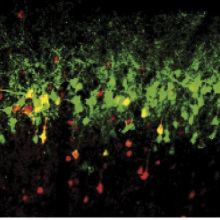
24:49 - Stress and depression
Stress and depression
with Prerana Shrestha, New York University
Depression is tightly bound up with stress, exposure to which can often precipitate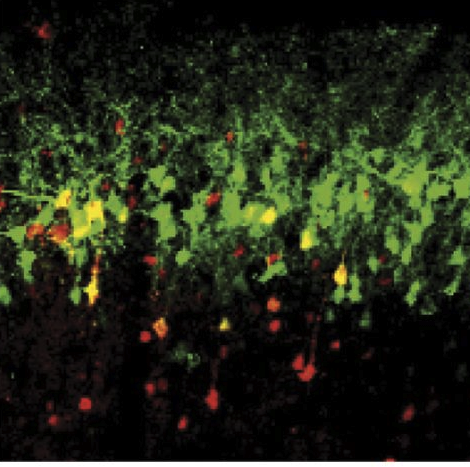 an episode that, as well as causing characteristic mood changes, also leaves its mark on some of the nerve cells of the brain's prefrontal cortex, connections between which shrink. Now we're a step closer to understanding why. Prerana Shrestha has been using tracing and genetic techniques to identify these affected nerve cells and she's found that they're the same population hit by the rare condition "Wolfram syndrome", suggesting that the causative WFS1 gene might also play a role in depression. She spoke to Chris Smith about what this could mean for depression research...
an episode that, as well as causing characteristic mood changes, also leaves its mark on some of the nerve cells of the brain's prefrontal cortex, connections between which shrink. Now we're a step closer to understanding why. Prerana Shrestha has been using tracing and genetic techniques to identify these affected nerve cells and she's found that they're the same population hit by the rare condition "Wolfram syndrome", suggesting that the causative WFS1 gene might also play a role in depression. She spoke to Chris Smith about what this could mean for depression research...
Prerana - Major depressive disorder is a highly heritable common mood disorder characterised by lack of motivation, reduced ability to derive pleasure from natural rewards, and abnormalities of sleep and appetite. Given strong evidence that bouts of depression can be elicited by stress and that stress strongly impacts the medial prefrontal cortex, we were interested in identifying circuit elements in this brain area that contribute to the relationship between stress and depression.
Chris - So, how did you try and home in on what those circuits might be?
Prerana - In order to discover the cells in medial prefrontal cortex that express genes implicated in human depression, we employed molecular profiling in the mouse cerebral cortex including genetics, vital tracing method, behaviour analysis and biochemistry, we identified a novel cell population that expresses the causative gene for wolfram syndrome.
Chris - What actually is wolfram syndrome?
Prerana - Wolfram syndrome is a multisystem disorder that first presents in the form of diabetes type 1 and type 2. But in the second decade, patients develop psychiatric symptoms.
Chris - Isn't it interesting that the circuits highlighted by your tracing studies also seem to be implicated where wolfram syndrome manifests in the prefrontal cortex?
Prerana - Right. We wanted to study specifically the role of this gene in medial prefrontal cortex so we employed transgenic strategy to create a double transgenic mouse so that we can delete this gene from conception in forebrain excitatory neurons. We also at the same time applied another strategy to delete this gene in adult mouse to avoid any negative impact during development of disrupting this gene.
Chris - When you make these knockouts, what do they show you? What syndromes do these mice develop?
Prerana - Deletion of this gene in either the entire cerebral cortex or the medial prefrontal cortex specifically during conception or during adulthood rendered these mice highly susceptible to acute restrained stress. For example, behavioural despair in forced-to-swim test or anhedonia in sucrose-preference test.
Chris - Do you know what the gene is doing in the cells that express it, in order that when you don't have it there, you get this sort of funny syndrome in these mice?
Prerana - So, it is known in pancreatic beta cells that WFS1 makes a protein that resides in endoplasmic reticulum and is involved in processing of various peptides including insulin. We were not aware until our study whether WFS1 protein has the same role in the medial prefrontal cortex neurons. Using electron micrography, we showed that WFS1 indeed is present in the endoplasmic reticulum of the medial prefrontal cortex neurons. In addition, we did biochemistry in mice cortical extracts from mice that were either exposed to stress or in baseline conditions. We found that exposure to 30 minutes of acute stress caused an impairment in processing of several important neuropeptides and growth factors including Wnt7A and neurotrophin factor 3.
Chris - One would speculate then that if this gene is dysfunctional, it doesn't work properly in either a human or a mouse, then what it does is it robs that population of cells of their ability to secrete those neuropeptides and this will have downstream effects on the targets which will have behavioural consequences.
Prerana - Right. Indeed, we found that once this gene was deleted, the hypothalamic pituitary adrenal stress access was hyper elevated in response to stress.
Chris - Do you think then that in an individual who develops just endogenous depression, they just become depressed for some reason as anything up to one in five people do at any one time, do you think that what's happening is that they've got a similar impact on this gene in their brains?
Prerana - Wolfram syndrome is a rare disease that affects roughly 1 in 500,000 people. However, carriers of mutation in wolfram syndrome gene WFS1 are more common and they comprise 1 per cent of the population and they have an increased risk for major depressive disorder.









Comments
Add a comment